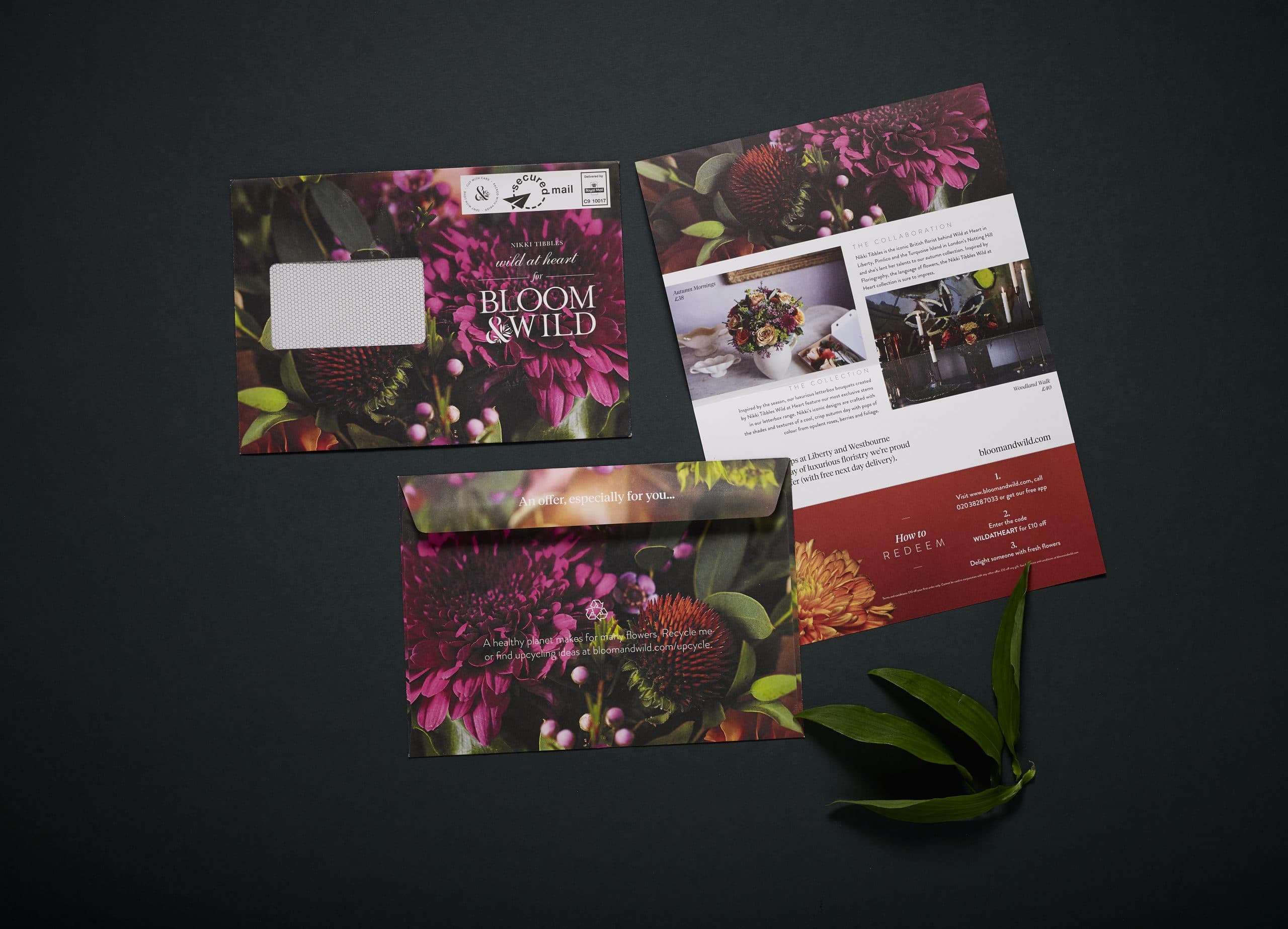As the world becomes increasingly digital, many companies see online marketing as a fast, easy, and low-cost alternative to more traditional methods. The reality is, direct mail is a powerful tool in the marketing toolkit, enabling businesses to amplify their message to consumers and maximise their reach.
The evolution of Direct Mail
Despite its reputation as one of the more traditional forms of marketing, Direct Mail has undergone a complete evolution over time. Offline marketing is a tangible touchpoint in an otherwise digital world. It can be used to integrate online and offline experiences, increasing the likelihood of brand recognition and – most crucially – conversion.

Online and offline marketing: the dynamic duo
One example of the happy marriage between on and offline marketing comes in the form of Programmatic Mail. – a cost-effective way of recovering lost and abandoned online shopping baskets. We install a bit of code into your eCommerce site which can track customers on your website. If they abandon their shopping cart without making a purchase, a piece of personalised direct mail is printed, packaged, and automatically shipped to your customer’s doorstep within 48 hours. A recent programmatic mail campaign resulted in 60% of customers returning to the site after receiving a mailer, with an 18% conversion rate.
Case study 1
A well-known storage and furniture solutions company wanted to send trigger mailings to people who browsed products but didn’t go through to the purchase stage.
- Conversion rates of 11.7%.
- 5.8% went on to a second purchase.
- £7 return on every £1 spent.
- The average basket value nearly doubled.
Case study 2
A UK-wide luxury clothing retailer wanted to encourage the second purchase.
- 10% of those mailed returned to the website.
- 8.6% conversion rate compared to the 6.6% control group.
- Over £3 return on investment per £1 spend.
The innovations don’t stop there. Some customers are using augmented reality to bring products and services to life. As well as adding a fun factor, these mailers encourage active engagement and immediate action, building trust and product understanding which ultimately leads to customer acquisition and retention.
When targeting matters: the power of modern direct mail
In years gone by, offline marketing relied on bulk targeting based on known customer data. Despite innovations in the planning, targeting, and delivery of modern direct mail campaigns, the perception of being geared towards a larger and broader audience remains.
We’ve already covered the finite targeting offered by programmatic mail, but direct mail also allows businesses to target consumers based on buying behaviours – enabling businesses to reach customers who have bought similar items at similar price points.

Partially addressed mail (or PAM, to her friends) also allows businesses to extend their reach to up to 30% more households for the same cost as a fully addressed mailing. We can take your existing customer data and create a demographic match that allows you to target more customers in a fully GDPR compliant way. With partially addressed mail proven to have an open rate of 88%, and an action rate of 26%, the results speak for themselves. PAM is also known to hang around the home for an average of 7.2 days, by which point most people will be pretty familiar with what she’s got to say for herself. With the average marketing email lifespan sitting at around 2 seconds, there’s a standout winner. Good old PAM.
When tracking counts:
Naturally, digital marketing brings with it a whole host of data. When it comes to tracking, including page views, click-throughs, conversions, and bounce rates, Google Analytics is hard to beat, giving you all you could dream of (and more!) For that reason, it may come as a surprise to learn that offline marketing also provides a whole host of tracking data to assess the effectiveness of your campaign.
Using unique tracking codes, matchback reporting, phone numbers, and landing pages, we can track when, how, and even who acted on your direct mail campaign. Doing this gives you pinpoint accuracy for tracking offline marketing campaigns – from viewing and response rates, to conversion rates and cost per acquisition – helping you to work out your overall ROI.
If content is king, data is the emperor!
If you work in marketing, you’ll undoubtedly have happened across the phrase “content is king”. It’s true, content is important, but it counts for nothing if it doesn’t make it in front of the right audience. In fact, data is 40% of any marketing campaign. We can supply data, cleanse it, optimise it and provide receipts to ensure complete traceability. Having clean data can make you eligible for discounts from the Royal Mail, resulting in better conversion rates and less wastage, and keep you on the right side of GDPR compliance.

Branding impact
In a digital world, receiving personalised direct mail can be a novelty. It’s often the case that physical correspondence is seen as more important than digital mail, making it more likely that people with engage with it. In fact, research suggests that direct mail evokes a stronger emotional response with higher levels of recall. Despite all this lovely stuff, we’re not here to argue that one is better than the other. We firmly believe that the best way to create a cohesive strategy that gets your brand message in front of consumers at multiple touchpoints is to embrace the power of direct mail in a digital world.
Can we help?
Offline marketing can help get the best out of your digital marketing activity. It can drive people to your website, improve the customer journey, and drive more conversions. To find out more about offline marketing, view some customer case studies, or speak to one of our marketing experts click here.




